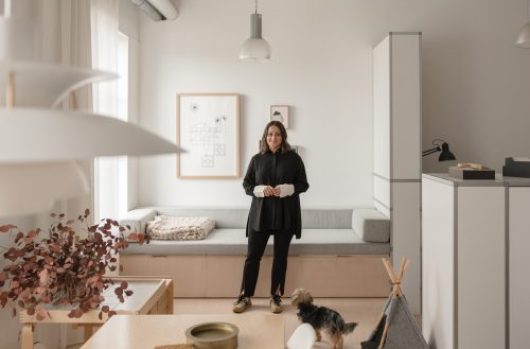Rosie Findlay, the world’s first ever Fashademic
Redfern local Rosie Findlay is the world’s first ever Fashademic. With a PHD in the fashion blogosphere, she studies the social and cultural context of style blogging. She is also well versed on the hidden politics of blogging your life to Instagram and Facebook.
We caught up with Rosie to talk about the meteoric rise of celebrity bloggers, the dark side of blogging and what this all says about our image conscious society.
How would you describe yourself?
I am a self-confessed Fashademic, fascinated by how people dress in everyday modes. In particular, the way that clothes and identity are folded together. As an object of study, I find blogs fascinating because sociologically and culturally they say so much about what we value as a society.
As a reader, I like it when people who blog, think deeply. I am less enamoured of the contemporary style blogosphere, what drew me originally was the independent voice.
Take Margaret Zhang as an example. She’s prodigious. How does someone do a law degree at Sydney University, be a full time blogger and work for another label as well? She is amazing. I myself am drawn to bloggers who weave lots of different elements together and have an original point of view.

How has style blogging changed from the first wave?
Personal style blogging came about in the first half of the new millennium. It came out of a series of other online modes of being – and it coalesced into its own distinct genre around 2004-2006. It first started with fashion nerds, writing with passion and excitement about their interest in fashion. Originally it was people talking about what they loved about fashion or about what irritated them. It was usually people writing from outside city centres and away from the places where fashion might be accessible.
Mainstream media like The New York Times and Dazed Digital started commenting on blogs and then opportunities started to crop up as certain bloggers were offered modelling contracts or opportunities to design one-off collections. It shifted from a really alternative independent aesthetic, to something more mainstream and mimicking of the magazine style.
Now I find it has become increasingly commercial, to the point where bloggers are doing sponsored posts and paid features for things they have been sent. But more than that, it has been coopted to look and feel like the mainstream. There is a commercial logic that underpins everything.
What is a second wave blogger?
The aesthetic now mimics the aesthetic of the mainstream media. You will see girls dressing in Louis Vuitton or contemporary Australian designers which are at a higher price point and more recognized as fashionable than the personal or individual style that you used to see with first wave bloggers.
Overall I would say the whole genre of personal style blogging has been corrupted and taken itself into the capitalist logic of the society in which we live. It is not an alternative practice anymore. There are literally thousands of personal style blogs now, if not millions.
Isn’t just a natural disruption of the old paradigm?
People’s value have always been folded up with their capital value – whatever you can produce is what your worth is. I think there is more to humankind than looking good in a photo, there is more to life than being Instagram ready.
What I think is problematic and kind of dark – is that when you read a blog – it feels like a close friend is sharing their life with you, but at the same time you are subtly being advertised and this is often concealed. With fashion magazines you know it is a commercial publication. But it is more obscured on style blogs.
I find it really interesting and also problematic, because we live in a capitalist society and there are particular logics and values around what gets rewarded, what it is to be human becomes implicated in the world of financial capital.
So if you can trade on your image and on yourself – and your life to make money – you can do with it what you want. But I think when a life is lived for the consumption of others, that’s limiting because it puts a focus on the consumption of you, rather than living your life in moment.
We have traded reality for pseudo images. So we have TV instead of experiencing something for ourselves. Since the development of web 2.0 and the evolution of platforms like Instagram and blogging –people are creating a visual narrative of their lives and that means people can present their lives in certain ways.
Who’s doing it well?
There are some people who are making money from their blog but are still putting forward an independent point of view. For example Susie Bubble – she is one of my favourites, one of everyone’s favourites, because she is really remarkable.
She brings a really curious attitude to fashion and celebrates emerging designers and unconventional beauty in fashion. She will often wear stuff that most people would be like ‘how do you wear that neo tulle cloud with overall straps’.
Rosie Findlay is also currently tutoring Fashion Dissertation and teaching a winter school intensive on fashion media at UTS. She also teaches Performance Studies on Bertolt Brecht at Sydney University and her first book ‘Oh Hai Guyz: Fashioning the style Blogosphere’ will be published with Intellect Press in 2015. You can read her blog here.




